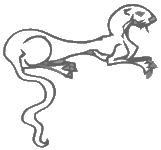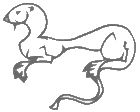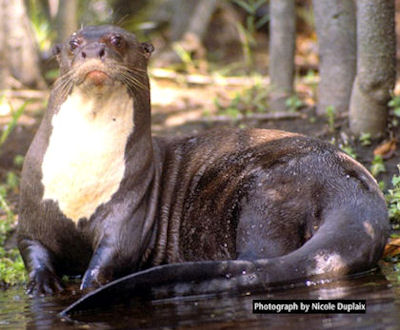 |
 |
 |
 |
 |
 |
 |
 |



Giant
Otter
Size:
From nose to tail, giant otters are 145 to 180 cm long. Males
are generally larger than females. Their tails are flattened
and flanged, and range from 45
to 65 cm long. Their ears are very small, and their eyes very large.
Ecology Habitat: Tropical rainforests waters in South America. Range/Distribution: The population has been reduced from its original range (Venezuela to northern Argentina) generally to the waterways of the Brazilian rainforest.
Conservation
Status: Endangered
Behavior Life Cycle: The gestation period for giant otters is 65 to 72 days. They are born in the dry season, between May and September. The dominant female is the only female that breeds, but the whole holt helps to raise the young. The pups stay in the den for the first two months of life. They then start to travel outside of the den, and start learning to swim. They begin to participate in group hunts and start eating fish soon after, but rely on their mothers' milk until they are about five months old. Giant otters are fully mature at two to three years of age, at which time they will probably leave the holt to find new territory, a mate, or a new group (although some otters will stay with their families long-term). Social: Giant otters are incredibly sociable. They live in family groups (holts) of ten or more, sometimes up to twenty otters! These groups consist of male and female parents, their young, and sometimes a couple of non-related otters that have joined their holt. They are very social and don't like to be alone, but they are also very territorial. One holt encroaching on the territory of another is one of the few things that may actually lead to violence between these generally very playful otters. Individual:
Brazilian
Otter, River dog
Subspecies (two proposed subspecies):
Recent research has indicated that there is not enough difference in mtDNA between these groups to warrant calling them distinct subspecies, but research has yet to be done in other areas. See this for the full article.
|
OtterQuest (c) 1999-current. Contact OtterQuest.
A few images on this web site have been borrowed from other sources, I credit them in the Links/Resource Page. Some may not yet be credited, if you know the source of an uncrdited photograph, please e-mail me with the information. Thank you. Dana


 Identification
Identification


